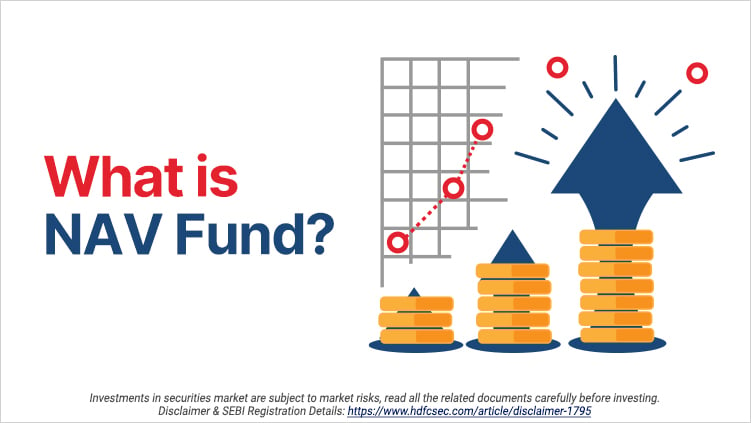What is NAV in Mutual Funds?
Mutual funds are investment vehicles that pool investors' money and then invest it in securities markets. A mutual fund scheme’s performance is represented by its Net Asset Value, shortly called NAV.
NAV is the unit price of a mutual fund scheme based on which the mutual funds are bought or sold. The NAV of a mutual fund is computed daily at the end of the day based on the closing prices of all the stocks and securities in that mutual fund scheme.
In essence, NAV denotes the market value of all the securities held by the mutual fund scheme at the end of the day. Mutual fund schemes invest in shares that change their value with time. Hence, the NAV of a scheme keeps changing and is calculated on a daily basis.
As per the SEBI Mutual Fund Regulations, NAVs of all Mutual Fund schemes are declared at the end of a trading session after markets close.
How is NAV calculated?
Mutual funds are divided into units, and the investors receive these units in proportion to their investment capital. The NAV for each unit is calculated by dividing the market value of the securities in the scheme by the total number of units of the mutual fund scheme on a specific date.
The mutual funds launch their New Fund Offers (NFO) at a fixed per unit price of Rs 10. As the value of the fund’s assets grows, the unit price also rises. However, a lower NAV does not specify that the fund is cheaper. Investors need to take into consideration various factors, such as past performance, underlying assets, AUM size, etc. while investing in a mutual fund scheme.
Let us understand the calculation of NAV with an example. For instance, an Asset Management Company (AMC) launches an NFO at an issue price of Rs 10 per unit. Suppose the AMC raises Rs 5,000 crore in the NFO from investors. The AMC will allot units to investors based on the amount collected. Hence, it will issue 500 crore units (Rs 5,000 crore / Rs 10) and allot them to investors in proportion to their investment. If a person invests Rs 1 lakh in this NFO, he will be allotted 10,000 units of the scheme.
Going ahead, the AMC invests the amount garnered in various securities depending upon the mandate of the scheme. The prices of these securities change daily, and hence, the NAV of the scheme will also change accordingly.
Suppose the value of the assets in the portfolio rises to Rs 5,100 crore the next day from Rs 5,000 crore. The scheme NAV will also increase to Rs 10.2. This will be calculated by dividing Rs 5,100 crore by 500 crore units. The investment value of Rs 1 lakh in the NFO also rises to Rs 102,000 (10,000 units X Rs 10.20 NAV). It is to be noted that the scheme expenses have been ignored in the above example for simplicity.
The NAV of a newly launched mutual fund scheme will be lower than an existing old scheme. Investors should not use NAV as the sole indicator to determine a scheme’s performance. NAV is derived from the value of the underlying securities of the mutual fund scheme and the accumulated profits since its launch.
The appreciation in the NAV of a scheme is more important than the NAV itself. Hence, to make sound investment decisions, investors should focus on the scheme’s historical performance, total expense ratio, among many other important parameters.
Related Posts
Don't miss another Article
Subscribe to our blog for free and get regular updates right into your inbox.
Categories
newsletter
 HSL Mobile App
HSL Mobile App 







